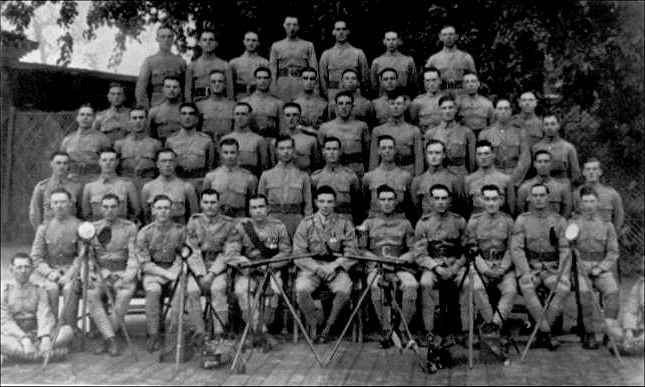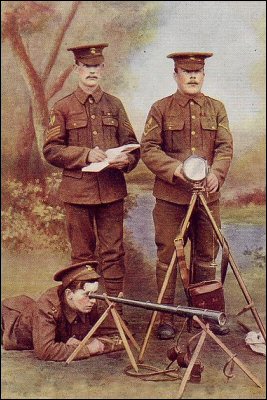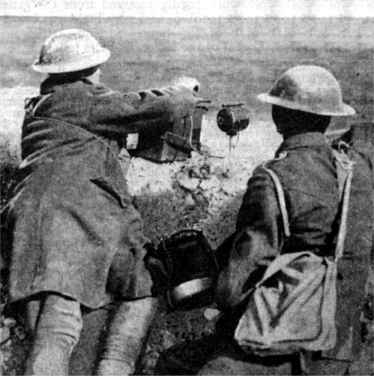A Signaller in World War 1
During the First World War being a signaller usually meant you were close to the frontline troops, providing signals communications back to your Company and Battalion H.Q. Wired telephones were used where possible but this involved laying landlines which was a hazardous job due to enemy shelling. At the start of the First World War flags were also used for signalling but this practice was little used as the war years progressed. Where it was not possible to lay landlines then many forms of visual signalling were used which made use of light either from sunlight (use of the sun and mirrors) in day time and lamps at night (Lucas Lamps). Messages were sent in Morse Code, one man operating the signalling device and one man using a telescope (where distances were great) to read the message sent back. Signallers were also used in forward positions to assist the artillery and provide information on their enemy targets. In these positions, often isolated, the signaller became vulnerable to enemy shelling and attack, and many signallers lost their lives. The standard field telephone used with landlines consisted of a wooden box containing two dry cells, a magneto generator, polarised bell, induction coil testing plug, and a "Hand Telephone C Mk.1." Towards the end of 1916 these were been replaced by the Fullerphone and by 1918 many Divisons adopted them in their forward positions. The Trench Signalling lamp (Seen in the photograph below right) was in a wooden case and was battery operated. It had a bulls eye lens to concentrate the light and had a morse key to switch the lamp on and off. It was used mainly for local use from trench to trench and operators would receive the message through a periscope or telescope. It was always extremely dangerous to transmit towards the front of the battlefield as this would attract enemy rifle fire. |
Heliograph |
The Heliograph |
A device know as the Heliograph was also used for signalling to a distant point. It comprised of a wooden tripod of which each leg was adjustable. The mirror assembly for this device was usually kept safely packed in a stout leather or wooden box. To use this devise the signaller would normally set it up on high ground. The mirror assembly would be unpacked and fixed to the tripod and secured by a knurled brass knob. A highly polished mirror fitted into a heavy brass ring about six inches across with pins at each side mounted in an inverted U of brass that could swivel on its stem allowed the mirror to nod on its pivots. The back of the mirror was covered by a brass plate with a brass stump and pivot that connected to the Morse key via a brass tube, the insides of which had been tapped at each end with an opposite thread. |

2nd Battalion Worcestershire Regiment - Signallers Platoon (France 1917)
(Private
John William Wilkins 40300 is sat on ground front right)
Prior to the formation of the British Army's Corps of Signals in 1920, communications were the responsibility of the Royal Engineers' 'signal service'. Signallers often wore a white over blue 'armlet' or brassard on both upper sleeves which identified them as signals personel.
Signallers using Trench Signalling Lamp |
Signalling Post on the Western Front |
At Divisional level, one continuous problem encountered by Signal Companies was moving from one position to another. At each Divisional location the Signallers had to familiarise themselves with the telephone network, its location and any inherent faults. This often involved replacing the equipment in the various exchanges with their own as they took over from the departing Division. All this was very labour intensive, each move entailed an advance party of signallers to prepare the way and ensure that the Division remained in communication at all times. In Brigades particularly, and in Divisions to a great extent, moves were frequent, and the equipment repairers spent a considerable portion of their time in the signal office either installing, improving, or taking down the instruments on completion of a relief which had just taken place, or in preparation for a relief to come. Even in 1918, it was the exception rather than the rule for a Division to hand over its signalling equipment to the incoming Division, though this was often done with test-panels, and, less commonly, with telephone exchanges.
Signaller testing the telephone-wires |
Loading Telegraph Poles |

Signallers of the 1st Battalion Worcestershire Regiment at Meerut, India ( c. 1926)






